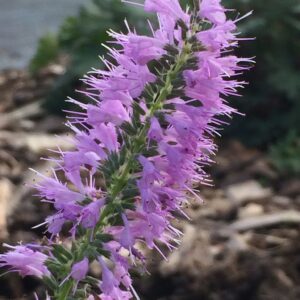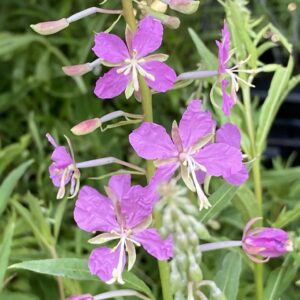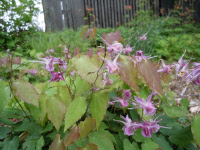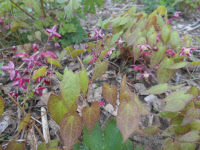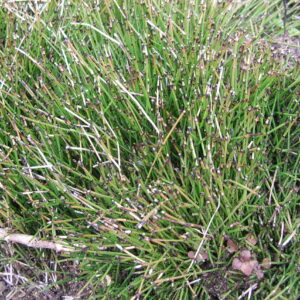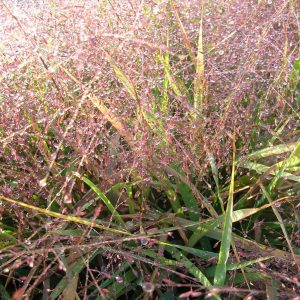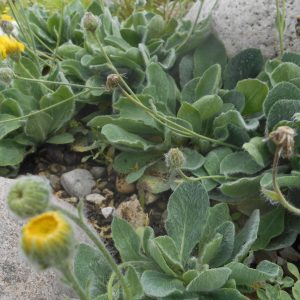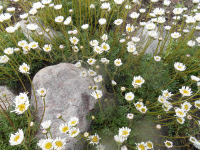Our Plants
Showing 201–208 of 587 results
-
Elsholtzia stauntonii mu xiang ru in China, Chinese mint Z 4-8
Tube-shaped purple flowers ascend in spires in fall on this subshrub that dies back in colder areas to regrow from the roots in spring. Valuable for its late bloom and fragrant foliage.
Tube-shaped purple flowers ascend in spires in fall on this subshrub that dies back in colder areas to regrow from the roots in spring. Valuable for its late bloom and fragrant foliage.
Size: 3-5’ x 3-5'
Care: sun in moist well-drained to well-drained soil
Native: hills, mountainsides and river banks in Gansu, Hebei, Henan, Shaanxi, Shanxi, China
Wildlife Value: nectar for bees late in seasonChinese mint shrub was collected in 1790’s during England’s Macartney expedition to China. Named for Prussian horticulturist, author, and Doctor Johann Sigismund Elsholtz (1623-1688) and Sir George Staunton, baronet (1737 – 1801), secretary of the expedition. He authored the three-volume report of the expedition and collected plants including this. An Authentic Account of an Embassy from the King of Great Britain to the Emperor of China.
-
Epilobium angustifolium syn. Chamaenerion angustifolium Fireweed Z 2-7
Bright pink to lilac purple flowers June-July atop red stems covered in willow-like leaves
Bright pink to lilac purple flowers June-July atop red stems covered in willow-like leaves.
Can be slow to establish – be patient!
Size: 2-6’ x 3’ spreading
Care: Sun to part shade in dry to moist well drained soil
Native: Circum-polar to the temperate northern hemisphere. Wisconsin native.
Wildlife Value: Attracts hummingbirds, bees, and butterflies. Host for caterpillars of Fireweed Clearwing moth and Nessus Sphinx mothCommon name comes from its quick reappearance after a wildfire. Native Americans used fireweed externally for burns and other skin conditions, and made a tea for gastro-intestinal and bronchial problems. Its shoots eaten as a vegetable and young leaves added to salads. Fireweed yields a honey so prized that some Canadian beekeepers drive – or even fly – their hives to areas rich in fireweed for the blossoming season. Described and named by 1753.
-
Epimedium grandiflorum Barrenwort, Bishop’s hat Z 5-8
White-lavender flowers in May atop wiry stems look like fantastical birds with too many wings, or a four-cornered bishop’s hat.
OUT OF STOCK
White-lavender flowers in May atop wiry stems look like fantastical birds with too many wings, or a four-cornered bishop’s hat. Ornamental heart-shaped leaves and red stems.
Size: 6-12” x 18” slow spreader
Care: shade to part shade in well-drained to moist well-drained soil. Once roots established, valuable in dry shade
Native: China, Japan & KoreaIts Chinese name is “Yin Yang Ho” meaning “Licentious goat herb, “ because allegedly an aphrodisiac for goats! In China & Japan thought to remedy impotence, liver ailments & all age related maladies. In Western gardens since 1834.
-
Epimedium x rubrum syn. Epimedium alpinum var. rubrum Red barrenwort Z 4-8
In mid- spring small, star-shaped, rosy-red flowers dance on the ends of wiry-thin stems about one foot high. Red-flushed foliage follows the flowers, the more sun, the more red leaves. Wonderful groundcover especially in shady, well-drained soil where little else grows.
OUT OF STOCK
In mid- spring small, star-shaped, rosy-red flowers dance on the ends of wiry-thin stems about one foot high. Red-flushed foliage follows the flowers, the more sun, the more red leaves. Wonderful groundcover especially in shady, well-drained soil where little else grows.
Size: 16” x 24” slow spreading
Care: Sun to shade in most any soil but best in part shade – one of most adaptable plants
Awards: Elisabeth Carey Miller Botanic Garden Great Plant PickCross between Epimedium grandiflorum and Epimedium alpinum. 1st described in 1853 in Belgique Hort. iii. 33. I.
-
Equisetum scirpoides Dwarf horsetail Z 3-11
Short, bamboo-like - Black bands show joints of green stems, no showy flowers
OUT OF STOCK
Short,bamboo-like – Black bands show joints of green stems, no showy flowers
Size: 6” x spreads – invasive in moist soil if not planted in pots sunk in the ground
Care: full sun, moist to wet soil
Native: all North America – incl. Arctic - north of ILCollected by André Michaux, French planthunter who searched nearly all No. Am. East of the Mississippi for 11 years in mid-1700’s. Contains large amounts of silica, giving it abrasiveness, so used to scrub. Grizzly bears in Pacific Northwest reported to eat Dwarf horsetail.
-
Eragrostis spectabilis Purple Love grass Z 5-9
Profuse tiny purple panicles in August-September. One of internationally known garden designer Piet Oudolf’s 100 “MUST HAVE” plants, Gardens Illustrated 94 (2013)
Profuse tiny purple panicles in August-September. One of internationally known garden designer Piet Oudolf’s 100 “MUST HAVE” plants, Gardens Illustrated 94 (2013)
Size: 2’ x 18”
Care: Full sun in well-drained soil - slow to emerge in spring. Drought tolerant
Native: Maine west to Minnesota, south to Arizona, Wisconsin nativeEragrostis is Greek meaning “love”, (eros) and grass, agrostis. This species first named by German botanist Frederick Pursh (1774-1820) in his book Flora Americae Septronalis. (1813)
-
Erigeron aureus Alpine yellow fleabane Z 5-8
White hairs cover frosted-looking basil leaves making this worthy of any garden even without flowers, but then its school bus yellow daisies flower from spring through fall.
OUT OF STOCK
White hairs cover frosted-looking basil leaves making this worthy of any garden even without flowers, but then its school bus yellow daisies flower from spring through fall.
Size: 3-4” x 3”
Care: sun in moist well-drained to well-drained soil
Native: Cascade Mountains from Alberta to State of Washington
Wildlife Value: attracts bees, butterflies and birds1st described in literature in 1884.
-
Erigeron compositus Cutleaf daisy, Dwarf mountain fleabane Z 3-8
Miniature, cushion shaped plant with wooly grey leaves topped by small bluish, pink or white rays like a daisy with a yellow center. Flowers in June-July.
Miniature, cushion shaped plant with wooly grey leaves topped by small bluish, pink or white rays like a daisy with a yellow center. Flowers in June-July.
Size: 6” x 6-12”
Care: sun to part shade in well-drained soil.
Native: all of western No. America from prairies to alpine slopes.Erigeron comes from Greek er meaning “spring” and geron for “old man” due to some of these species having white downy hair like an old man.
Thompson Indians from British Columbia chewed on the plant then spit on sores to remedy skin ailments. They also made a decoction of the plant, mixed with any weeds for broken bones. Collected by Meriwether Lewis in late spring 1806 near today’s Lewiston Idaho. Erigeron comes from Greek er meaning “spring” and geron for “old man” due to some of these species having white downy hair like an old man.

